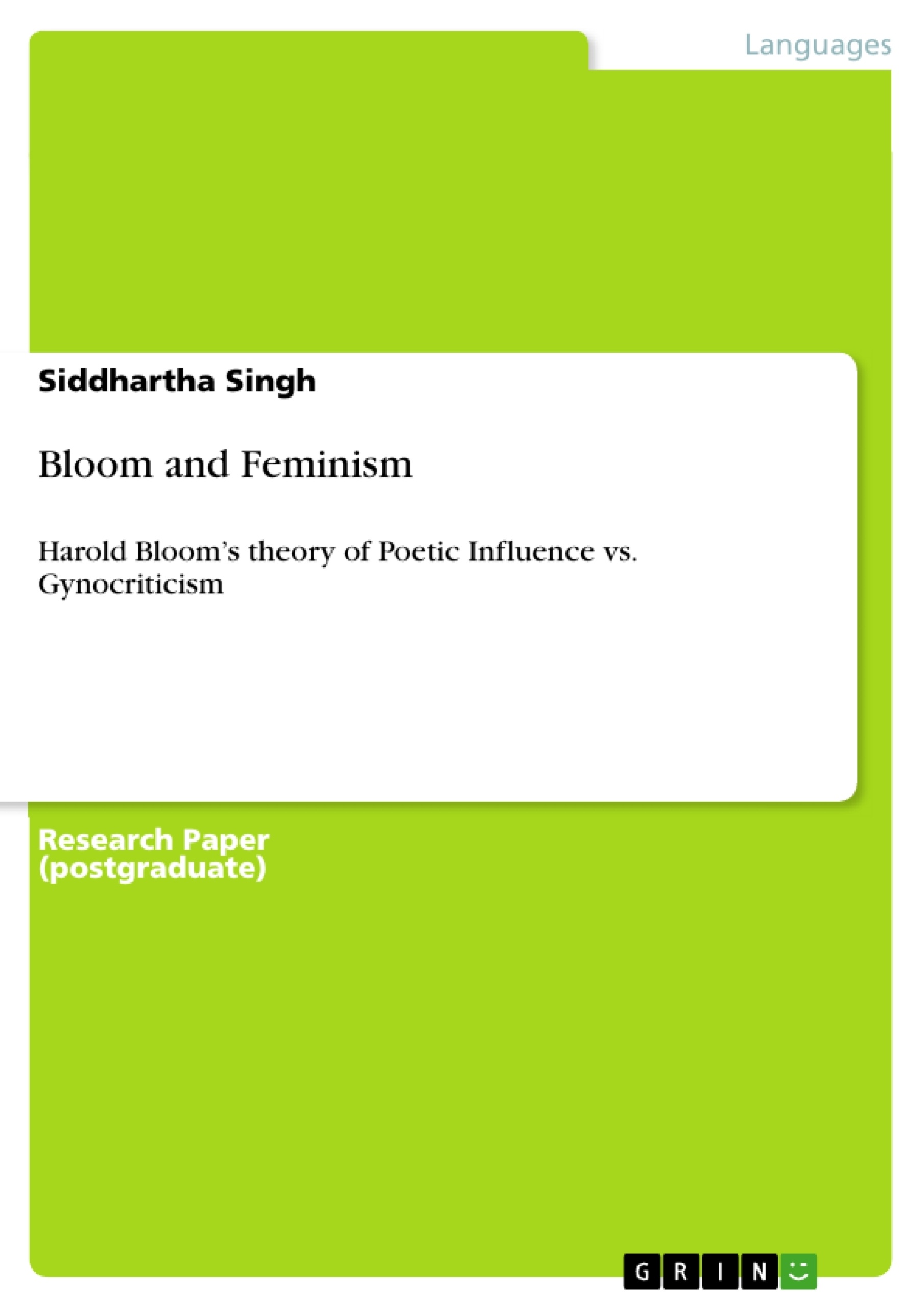Harold Bloom offers a theory of poetry "by the way of a description of poetic influence, or the story of intra-poetic relationship" (1973 5). The intra-poetic relationship contends with the darker truth that every poet qua poet suffers from the anxiety of influence; a "melancholy principle” that makes the poet wonder whether there is anything left at all for him to say. The poetic influence, Bloom proposes, creates anxiety. Therefore, the new poet wants to see the "libraries burning", scan so that he can enter into the canon. However a historical approach, following Foucault Shows that literature has always served political power and that the canon has been a construct for similar ends. So, Foucault would say, let the canon be deconstructed to reveal this power structure and let the literary values be redefined to serve social goals. This almost invariably means the goals of feminists and multiculturalism also. They argue that the process of canon-formation has expressed the interests of the dominant class to the exclusion of women, homosexuals and non-Europeans. Like the Biblical canon the literary canon has been closed to all but dead White phallocentrists, and must be forced open. Bloom lumps together the various critical schools, which derive inspiration from this approach as the School-of-Resentment. Against this chool-of-resentment Bloom propagates "aestheticism" as the sole test of "canonicity". His concept of originality leads him to defend the "autonomy of aesthetics" which returns us to "the sovereignty of the solitary soul, the reader not as a person in society but as the deep self, our ultimate inwardness". Thus it is the aesthetic power of a work that compels readability and therefore it breaks into the canon. Bloom here seems to constitute literature as a stable affair. This is what gynocriticism opposes since it shows how the mechanism of patriarchy has always subsided the female writers from the mainstream literature and thus from the established canon as well, therefore gynocriticism seeks a female tradition of writing.
Inhaltsverzeichnis (Table of Contents)
- Harold Bloom's Theory of Poetic Influence vs. Gynocriticism
- Bloom's Theory of Poetic Influence
- Anxiety of Influence
- Misprision and Tropes
- Aestheticism and Canonicity
- Gynocriticism
- Towards a Feminist Poetics
- Feminism and Literature
Zielsetzung und Themenschwerpunkte (Objectives and Key Themes)
This text examines the contrasting theories of Harold Bloom and gynocriticism in relation to literary influence and canon formation. It explores the complexities of poetic influence, the role of aestheticism in establishing a literary canon, and the development of a feminist perspective on literary history.
- Bloom's theory of poetic influence and anxiety of influence
- The role of tropes and misprision in poetic creation
- The concept of aestheticism and its implications for canon formation
- Gynocriticism's focus on a female literary tradition and its critique of the male-dominated canon
- The interplay of literary influence, canon formation, and gender dynamics in shaping literary history
Zusammenfassung der Kapitel (Chapter Summaries)
The text begins by introducing Harold Bloom's theory of poetic influence, outlining the "anxiety of influence" experienced by poets due to the overwhelming weight of tradition. Bloom argues that new poets must engage in "misprision" or "misreading" of previous works to establish their own originality. This process involves a complex interplay of tropes, rhetorical devices employed to create new meanings and assert individual identity.
The text then explores Bloom's concept of aestheticism as the primary criterion for canonicity. This emphasis on aesthetic power leads to a defense of the Western literary canon, which Bloom considers a vital site of creative struggle and survival. He argues that the canon must be defended against the "School of Resentment," a broad term encompassing various critical approaches that challenge the traditional canon.
The text shifts its focus to gynocriticism, a feminist approach that critiques the male-dominated canon and seeks to establish a distinct female literary tradition. Elaine Showalter's work is highlighted, emphasizing the need for a feminist poetics that analyzes the unique characteristics and experiences of women as writers.
The text concludes by contrasting Bloom's and gynocriticism's perspectives on literary influence and tradition. While Bloom focuses on the individual poet's struggle for originality, gynocriticism highlights the need to recognize and analyze the contributions of women writers within a separate, female-centered literary tradition.
Schlüsselwörter (Keywords)
The key concepts explored in this text include poetic influence, anxiety of influence, misprision, tropes, aestheticism, canon formation, gynocriticism, feminist poetics, and literary history. The discussion revolves around the interplay of these concepts, highlighting the contrasting perspectives of Harold Bloom and gynocriticism on the role of influence, originality, and gender in shaping the literary landscape.
- Quote paper
- Siddhartha Singh (Author), 2012, Bloom and Feminism, Munich, GRIN Verlag, https://www.hausarbeiten.de/document/202354


